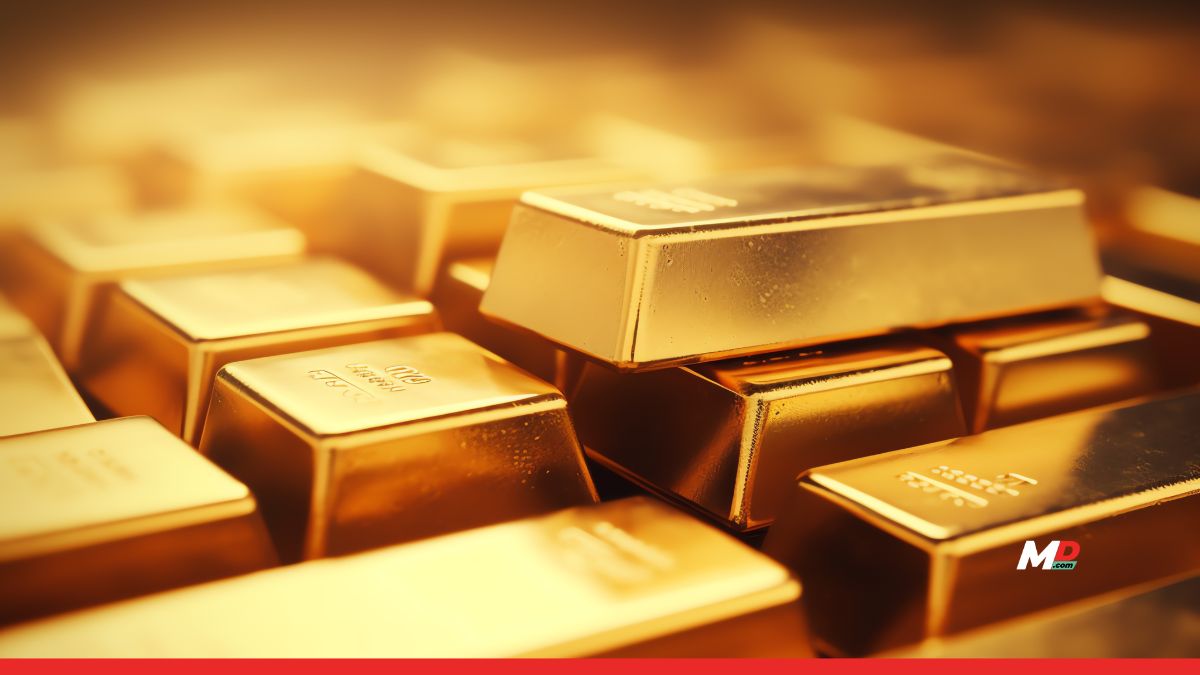Business
The Great Indian Gold Rush: What’s Fueling the Surge Toward Rs 1 Lakh?
Published
8 months agoon

As India inches closer to the symbolic Rs 1 lakh per 10 grams mark for gold, investors, consumers, and policymakers alike are grappling with a fundamental question: what exactly is fuelling this unprecedented rally?
The current gold surge is of course driven by our love for the metal, but more than this demand it’s also a complex interplay of geopolitical uncertainty, macroeconomic recalibration, shifting central bank strategies, and the enduring psychology of safety that is driving this surge.
Also read: Gold biscuits among unique items left behind in Ubers in 2024
The Trump Tariff Effect and the Safe Haven Appeal
At the heart of the current gold rally lies a deeply volatile global political environment. Donald Trump’s renewed grip on American economic strategy, particularly his penchant for tariffs, migration controls, and combative foreign policy, has ignited tremors in global markets. This policy-driven unpredictability has unnerved investors, who are flocking to gold as a traditional safe-haven asset.
“Gold prices extended their record-breaking rally as the fresh week kicked off with strong early buying. The rally is being supported by escalating tariff tensions, concerns over the US economic outlook, and the looming US debt crisis. Continued buying from China, global central banks, and institutional investors has added momentum”, said Jateen Trivedi, VP Research Analyst at LKP Securities.
Chintan Mehta, CEO of Abans Financial Services, concurred, saying, “Investors are closely watching Trump’s tariff strategy and commentary from FOMC members. Any hint of further easing could sustain gold’s bullish trend.”
In normal times, a strong dollar would suppress gold demand. But this is no ordinary cycle. Both gold and the dollar are rising in tandem—an anomaly that reflects the market’s lack of confidence in global economic stability and its desperation to hedge against systemic risk. The dollar remains strong, bolstered by policy announcements, but gold is benefiting from a broader global risk-off sentiment.
Macroeconomic Backdrop: Inflation Worries and Rate Uncertainty
Gold’s appeal also ties in closely with global inflation and interest rate expectations. Tensions between the US Federal Reserve and the Trump administration have intensified over the direction of interest rates. With speculation of rate cuts on one end and inflationary pressures on the other, markets are increasingly looking to gold as a store of value.
The dollar index dropping to multi-year lows in recent sessions has added fuel to this trend. Simultaneously, COMEX gold hovering near $3,395 per troy ounce suggests that traders expect prolonged uncertainty.
Central Bank Lap Up Gold as De-Dollarisation Continues
A closer look at gold demand reveals a major shift in central banking behavior, especially post the Ukraine conflict. In a world increasingly wary of geopolitical fallout and US financial dominance, central banks are diversifying away from dollar assets.
In 2024 alone, global central banks purchased a staggering 1,044 tonnes of gold, representing over 20% of total global demand. China, Turkey, Poland, and Azerbaijan led this shift. This trend is unlikely to reverse, as governments seek to insulate their reserves from political risk—a lesson reinforced when Russia’s US-held forex reserves were frozen following its invasion of Ukraine.
This structural demand, led by institutions rather than consumers, has created a sturdy floor for gold prices, contributing to the sustained rally.
India’s Cultural Affinity Meets Strategic Uncertainty
On the domestic front, India’s relationship with gold transcends economics. It is cultural, emotional, and strategic. Despite government efforts to channel gold investments through financial products like Sovereign Gold Bonds (SGBs), Indian households continue to favour physical gold, especially as jewellery.
Retail prices have technically crossed Rs 1 lakh per 10 grams after including GST, though the physical market hovers around Rs 97,200. This psychological benchmark reflects a generational shift in perception. Gold is no longer just a family heirloom or wedding essential; it’s now a geopolitical hedge as well for the savvy investor.
Interestingly, while demand for jewellery remains steady, rising prices could temper fresh buying. Yet, recycling of old gold has increased—a trend that may indicate profit-booking or value realization by households.
Meanwhile, the government’s early redemption of SGBs underscores another layer of this gold rush. With rising prices, the cost of servicing these bonds has increased, making it financially prudent for the state to reduce exposure. It also reflects the broader challenge of coaxing Indians away from physical gold.
The Investment Dynamic: Gold as an Antidote to Volatility
As global equity markets fluctuate and bond yields remain uncertain, gold offers an anchor of predictability. In 2024, gold investment demand was pegged at 1,200 tonnes, with India and China again leading the pack.
Exchange-Traded Funds (ETFs) have played a pivotal role, reflecting investor sentiment in real time. Though volatile, ETF demand has overall added momentum to gold’s upward trajectory.
But experts advise caution. While gold has risen over 26% in 2025 so far, entering the market now may require more tactical finesse. Rather than bulk buys, economists suggest staggered purchases on dips and greater attention to global cues—especially movements in the dollar index and policy changes in Washington and Beijing.
The Big Question: Is the Gold Rally Sustainable?
From a historical standpoint, gold’s price trajectory has always been tied to economic distress. During the 2010–2013 QE era, gold rose steadily before taper tantrums brought it down. After remaining below $1,500/oz for nearly seven years, it breached $2,000 in 2023, and since then, it’s been on a near-vertical climb.
While current prices may hold in the near term, analysts foresee a correction if equilibrium returns. The new normal could well be a $2,500–2,800/oz range, with $3,000+ levels viewed as unsustainable in a stable macro scenario.
The two factors most likely to dictate future movement are central bank demand (which is steady but gradual) and US trade policy (which remains volatile and unpredictable).
Gold Mirrors Global Investor Anxiety
The current gold rally isn’t just about shiny metal crossing a symbolic threshold. It’s about a world that’s losing confidence in its traditional financial safeguards—central banks, fiat currencies, and global institutions.
For India, the gold rush is a reflection of both age-old affinity and contemporary economic uncertainty. It is as much about tradition as it is about strategy. And until the dust settles on global volatility, gold will continue to glitter—not as a luxury, but as a lifeline.
You may like
-


India’s Growth Engines Awarded: Most Preferred Workplaces 2025 Set New People-Centric Benchmarks
-


India’s Growth Engines Awarded: Most Preferred Workplaces 2025 Set New People-Centric Benchmarks
-


CBI books Anil Ambani’s son, RHFL in ₹228 Crore bank fraud case
-


Quick-Commerce Heading for Shakeout as Funding Model Fails, Warns Blinkit CEO
-


Venkatesh Iyer never looked at us during trials and I thought he was someone with a lot of attitude : Abhishek Nayar
-


Welspun One expands footprint with 46-acre Talegaon MIDC project; unveils ~INR 550 crore plan for a next-generation logistics park


